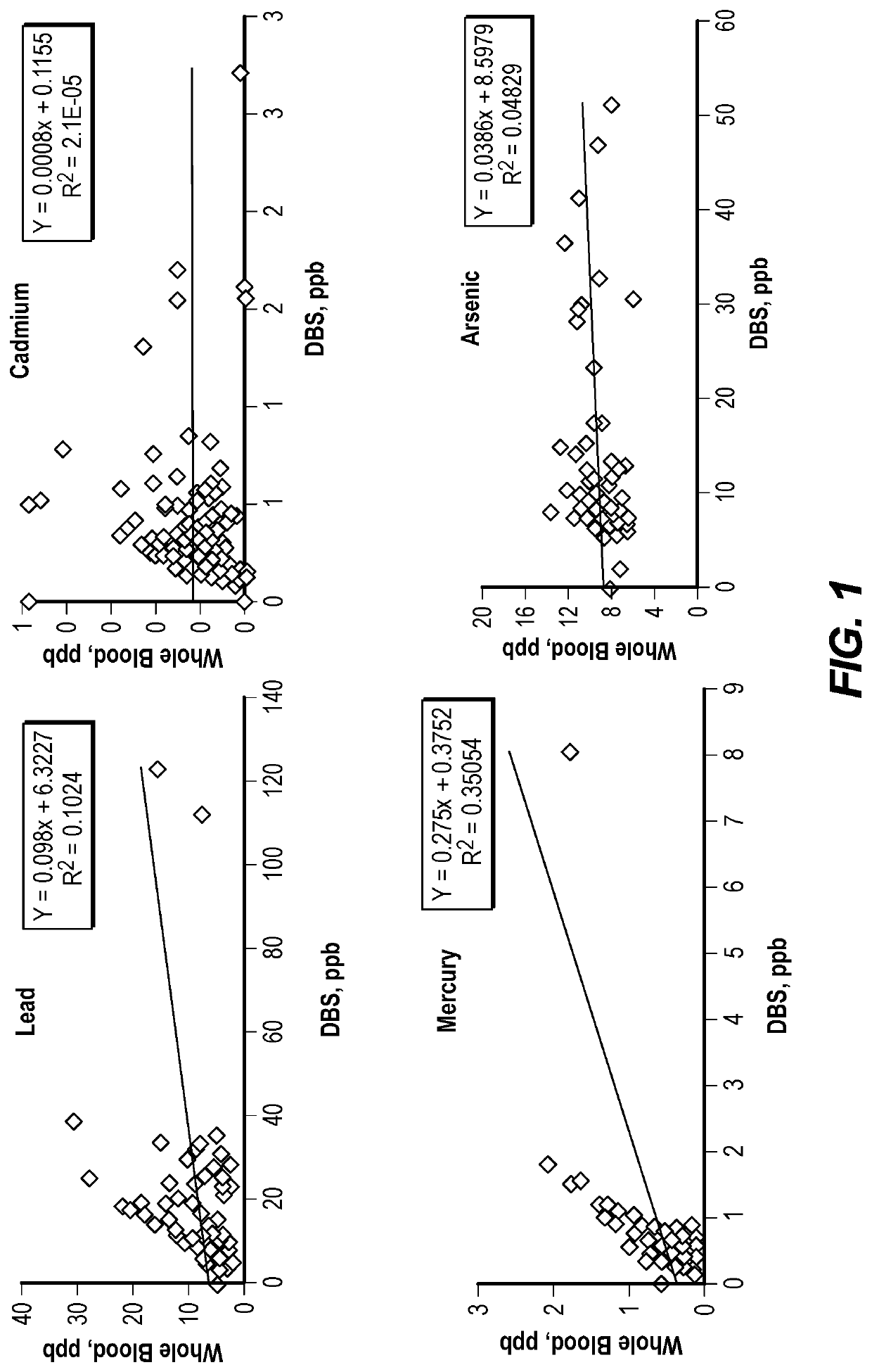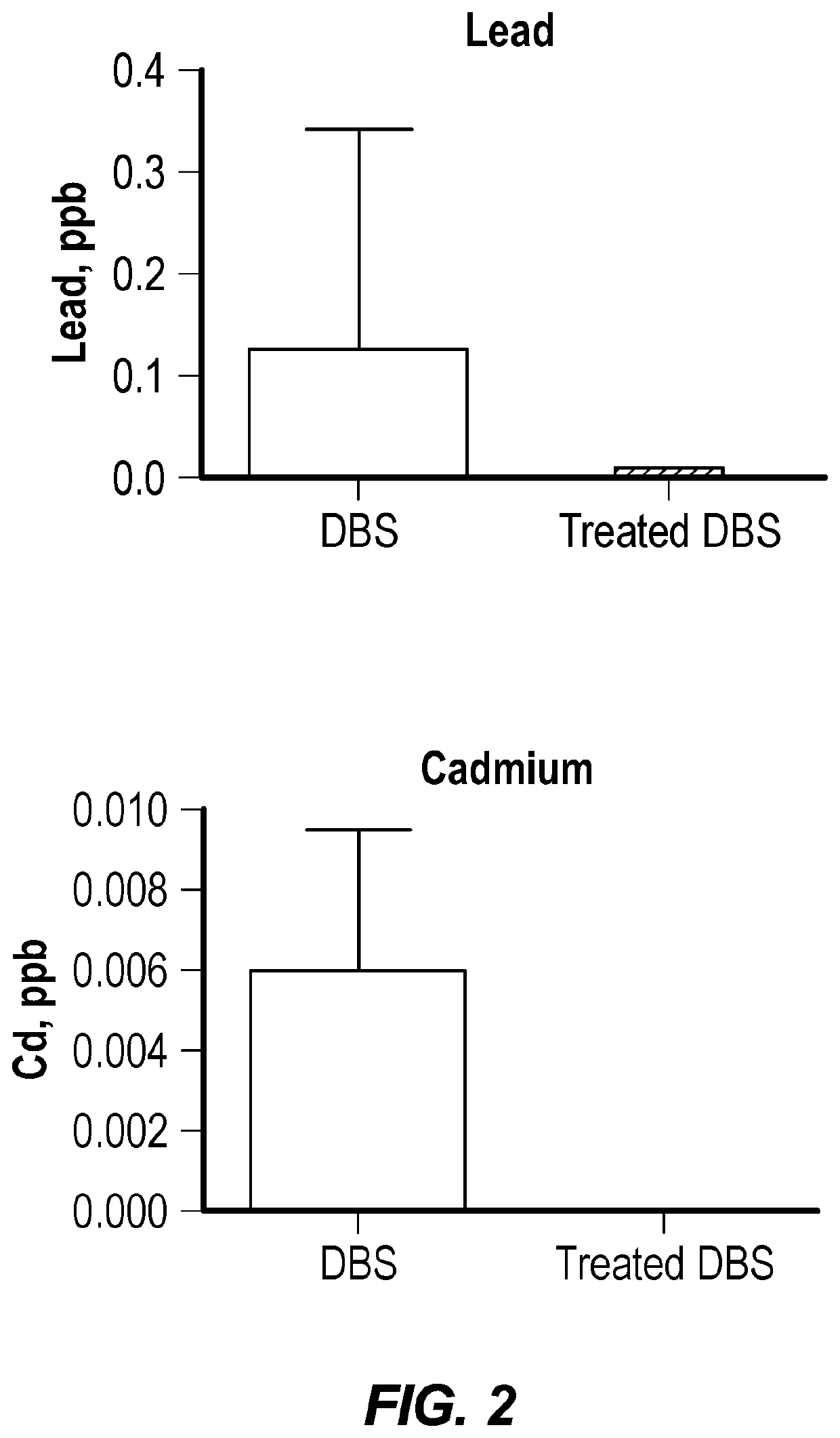Minimally-invasive collection system for collecting biological samples for quantifying heavy metals, other toxicants, pathogens, and biomarkers
a biological sample and collection system technology, applied in the field of minimally invasive collection system for biological samples, can solve the problems of toxic exposure, unrecognized health effects of exposure to toxic metals during all stages of early development, and achieve the effect of preventing analyte loss
- Summary
- Abstract
- Description
- Claims
- Application Information
AI Technical Summary
Benefits of technology
Problems solved by technology
Method used
Image
Examples
example 1
al Detection in Dried Blood Spots
[0072]This example describes heavy metal detection in dried blood spots and specifically describes a targeted extraction and analytical procedure optimized for specifically quantifying As, Pb, Hg, and Cd in DBS specimens. Major features of this protocol include: 1) the use of a one-batch extraction procedure to avoid contamination and analyte loss during transfer and filtration steps, 2) the addition of gold (Au) in the extraction solution to amalgamate Hg and enhance recovery and prevent loss of Hg throughout the analytical procedure, 3) normalization of dried blood mass to more precisely estimate relative blood volumes, 4) the use of paired filter paper blanks for all DBS samples to evaluate background contamination in the Whatman #903 Protein Saver cards, and 5) use of an organic acid (ultra-trace metals grade acetic acid) to enhance the signal for As.
[0073]All samples were excised using ceramic scissors (VWR, Atlanta, Ga.) that were acid washed i...
example 2
ied Blood Spots for Estimating Exposures to Heavy Metals in Epidemiological Research
[0085]Reference is made to Funk et al., “Use of Dried Blood Spots for Estimating Children's Exposures to Heavy Metals in Epidemiological Research,”J. Environ. &Analyt. Toxicology 2015, S7, ISSN: 2161-0525, published on Jul. 24, 2015 and incorporated herein by reference in its entirety.
ABSTRACT
[0086]Background: Children's exposures to arsenic (As), lead (Pb), mercury (Hg), and cadmium (Cd) are of particular concern in early-life. Exposures to heavy metals are traditionally measured in whole venous blood, which is costly and invasive. As an alternative we describe a method for quantifying As, Pb, Hg, and Cd in dried blood spot (DBS) samples.
[0087]Objectives: To validate a method for quantifying levels of As, Pb, Hg, and Cd in finger-stick DBS samples. Background metal contamination in blood collection cards poses a challenge for quantifying heavy metals in DBS samples. Here we report a method to remove...
example 3
etal Blood Collection Card for Screening Newborns and Children
[0153]Reference is made to the Invention Disclosure Form entitled “A Heavy Metal Blood Collection Card for Screening Newborns and Children,” by William E. Funk, Thomas W. McDade, and Andrew Unger, received date of Apr. 27, 2016.
PUM
| Property | Measurement | Unit |
|---|---|---|
| diameter | aaaaa | aaaaa |
| volume | aaaaa | aaaaa |
| volume | aaaaa | aaaaa |
Abstract
Description
Claims
Application Information
 Login to View More
Login to View More - R&D
- Intellectual Property
- Life Sciences
- Materials
- Tech Scout
- Unparalleled Data Quality
- Higher Quality Content
- 60% Fewer Hallucinations
Browse by: Latest US Patents, China's latest patents, Technical Efficacy Thesaurus, Application Domain, Technology Topic, Popular Technical Reports.
© 2025 PatSnap. All rights reserved.Legal|Privacy policy|Modern Slavery Act Transparency Statement|Sitemap|About US| Contact US: help@patsnap.com



